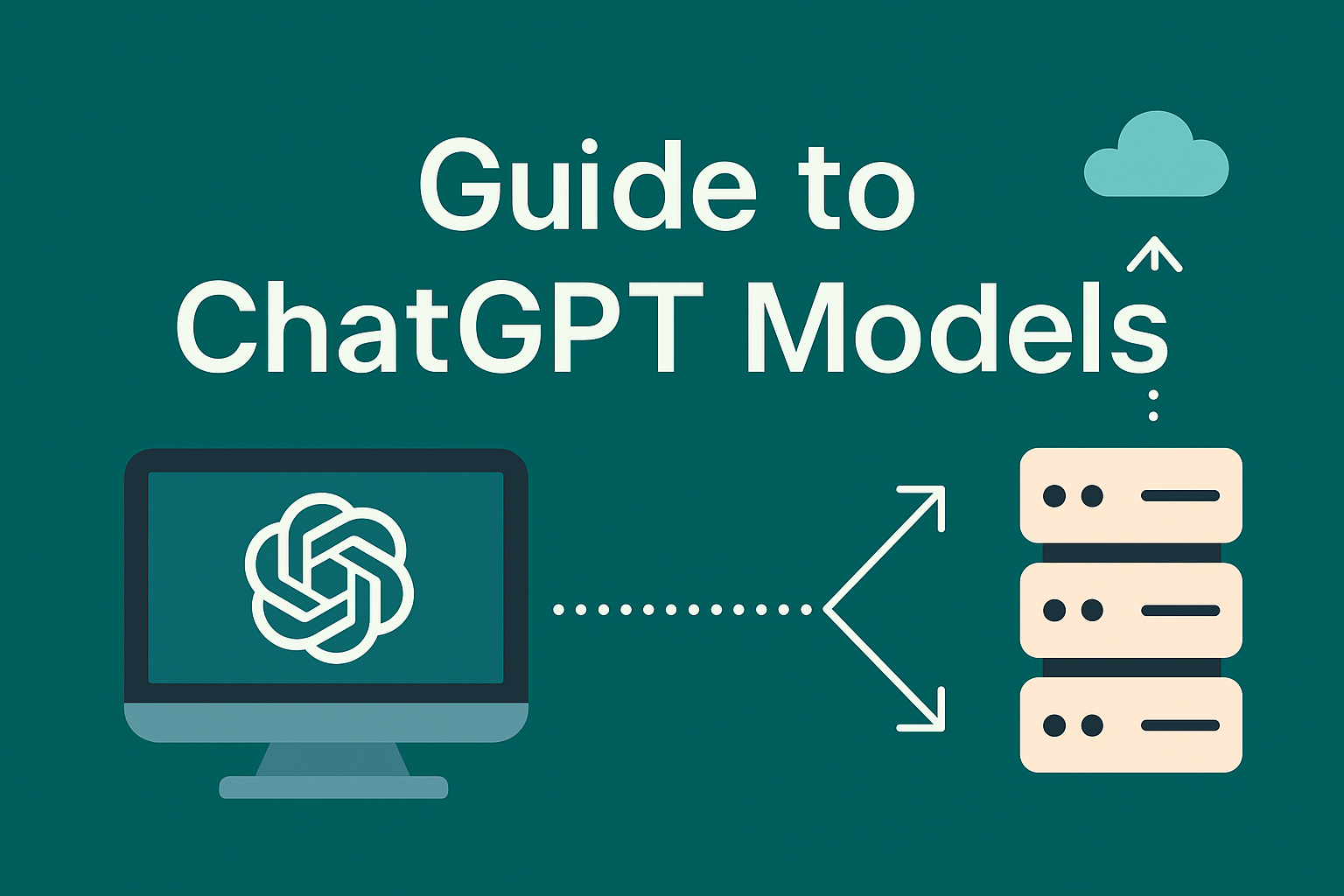🧠 Understanding All ChatGPT Models: From GPT-1 to GPT-4 Turbo
 Rohit Ahire
Rohit AhireTable of contents

A Deep Dive into the Evolution, Capabilities, and Benchmarks of OpenAI's ChatGPT Family
📌 Introduction
In this blog, I will shed some light on the evolution of ChatGPT models — from their humble beginnings with GPT-1 to the cutting-edge GPT-4 Turbo that powers many of today’s AI applications.
We'll cover:
The timeline of releases
Key architectural differences
What each model can do that the previous couldn’t
Benchmark comparisons
Visual diagrams to simplify concepts
References to measure or screenshot benchmark scores yourself
By the end, you’ll have a complete picture of how far ChatGPT has come — and what makes each version special.
📅 Timeline of ChatGPT Model Releases
| Model | Release Date | Core Architecture | Notes |
| GPT-1 | June 2018 | Transformer, 117M parameters | First generative transformer model |
| GPT-2 | Feb 2019 | Transformer, 1.5B parameters | Gained attention for realistic text generation |
| GPT-3 | June 2020 | Transformer, 175B parameters | Massive leap in fluency and few-shot learning |
| ChatGPT | Nov 2022 | GPT-3.5 | Fine-tuned with Reinforcement Learning from Human Feedback (RLHF) |
| GPT-4 | Mar 2023 | Multimodal | Can process both text and images |
| GPT-4 Turbo | Nov 2023 | Optimized GPT-4 | Cheaper, faster, and available via ChatGPT Plus |
🧱 GPT-1: The Beginning (2018)
Parameters: 117M
Paper: Improving Language Understanding by Generative Pre-training (Radford et al., 2018)
Usage: Proof-of-concept
Limitations:
Poor coherence on long text
Not suitable for real-world dialogue
📌 No API or public interface was released.
🔥 GPT-2: The Controversial Breakthrough (2019)
Parameters: 1.5B
Paper: Language Models are Unsupervised Multitask Learners
Strengths:
Generated surprisingly human-like paragraphs
Could complete stories, write code snippets, generate articles
Limitations:
Still lacked consistency and factual grounding
OpenAI initially refused full release due to misuse concerns
🚀 GPT-3: Scaling Laws in Action (2020)
Parameters: 175B
Paper: Language Models are Few-Shot Learners
Innovations:
Powerful few-shot and zero-shot learning
Generalist capabilities: summarization, Q&A, translation, and more
Used in:
Chatbots (early ChatGPT prototypes)
Copilot for coding
Limitations:
Prone to hallucinations
Not always aligned with human intent
📊 Benchmarks (from paper):
SuperGLUE: 71.8 (GPT-3) vs. Human Baseline: 89.8
TriviaQA: 64.3 accuracy (GPT-3 Zero-shot)
🧪 Benchmark Reference Site:
🤖 GPT-3.5 & ChatGPT (Nov 2022)
Not a separate paper — it’s a fine-tuned GPT-3 model with:
Supervised learning on dialogue data
Reinforcement Learning from Human Feedback (RLHF)
Key Feature:
First model used in ChatGPT interface
Launched via chat.openai.com
Improvements:
More aligned answers
Contextual memory (within session)
Visual idea:
- RLHF training diagram
🧠 GPT-4: Multimodal Intelligence (Mar 2023)
Architecture: Not public, but much larger and more structured than GPT-3
Capabilities:
Understands and generates text
Can see and interpret images
More nuanced answers
Benchmarks:
Bar Exam (Uniform Bar Exam): 90th percentile
SAT Math: 89th percentile
GRE Verbal: 99th percentile
📍Reference:
⚡ GPT-4 Turbo (Nov 2023)
Built on GPT-4 but optimized:
Cheaper
Faster
Higher context length (128k tokens)
Used in:
ChatGPT Plus ($20/month)
API (chat completions endpoint)
Custom GPTs
What's new in Turbo:
Better performance on long documents and code
Improved memory support (experimental in ChatGPT)
📊 Where to measure Turbo benchmarks:
https://lmsys.org — leaderboard for models
https://chat.lmsys.org — fight mode comparison
🎓 Summary Table
| Model | Parameters (Est.) | Key Feature | Usage | Notes |
| GPT-1 | 117M | Pretraining | Research only | No API |
| GPT-2 | 1.5B | Long-form text gen | Early demos | First "usable" LLM |
| GPT-3 | 175B | Few-shot learning | API, Codex | Massive breakthrough |
| GPT-3.5 | - | RLHF | ChatGPT (Free) | Aligned dialogues |
| GPT-4 | ~1T (unofficial) | Multimodal | Paid tools | Top-tier reasoning |
| GPT-4 Turbo | Optimized GPT-4 | 128k tokens, fast | ChatGPT Plus | Current default |
📌 Closing Thoughts
From 117 million to over a trillion parameters, the evolution of GPT models reflects a revolution in how machines understand and generate language. Each version has taken us closer to truly helpful, safe, and versatile AI.
Whether you’re a researcher, developer, or just an enthusiast — understanding this evolution helps you appreciate how these systems work, what they’re good at, and where they might go next.
Want to dive deeper? Check out:
https://arxiv.org/search/cs?searchtype=author&query=Brown%2C+T (research papers)
https://paperswithcode.com/sota (leaderboard benchmarks)
🔜 Coming Soon:
Visual Timeline of ChatGPT Models
Prompt Engineering Tips by Model Type
GPT-4 vs Claude vs Gemini — Feature Shootout
Subscribe to my newsletter
Read articles from Rohit Ahire directly inside your inbox. Subscribe to the newsletter, and don't miss out.
Written by
